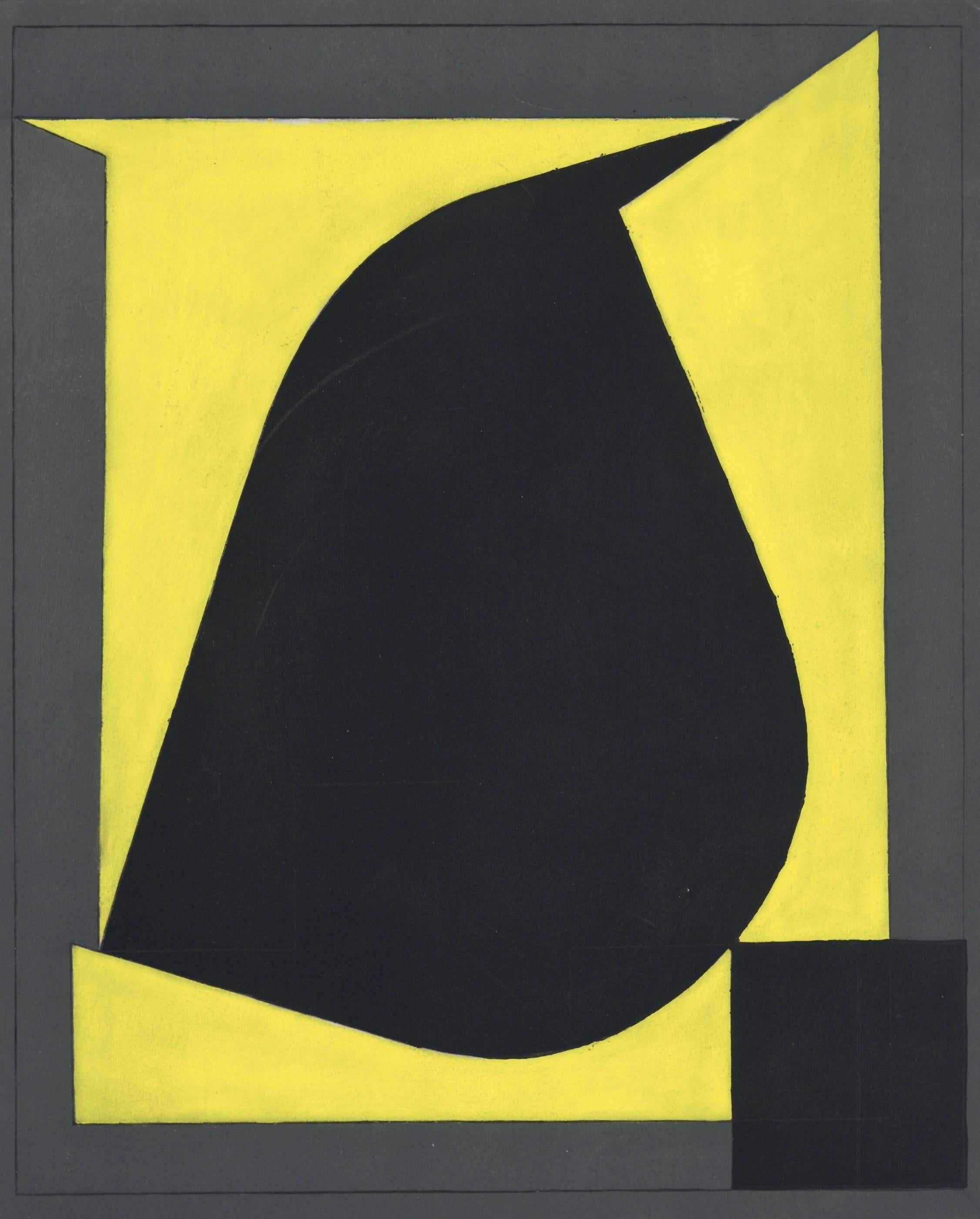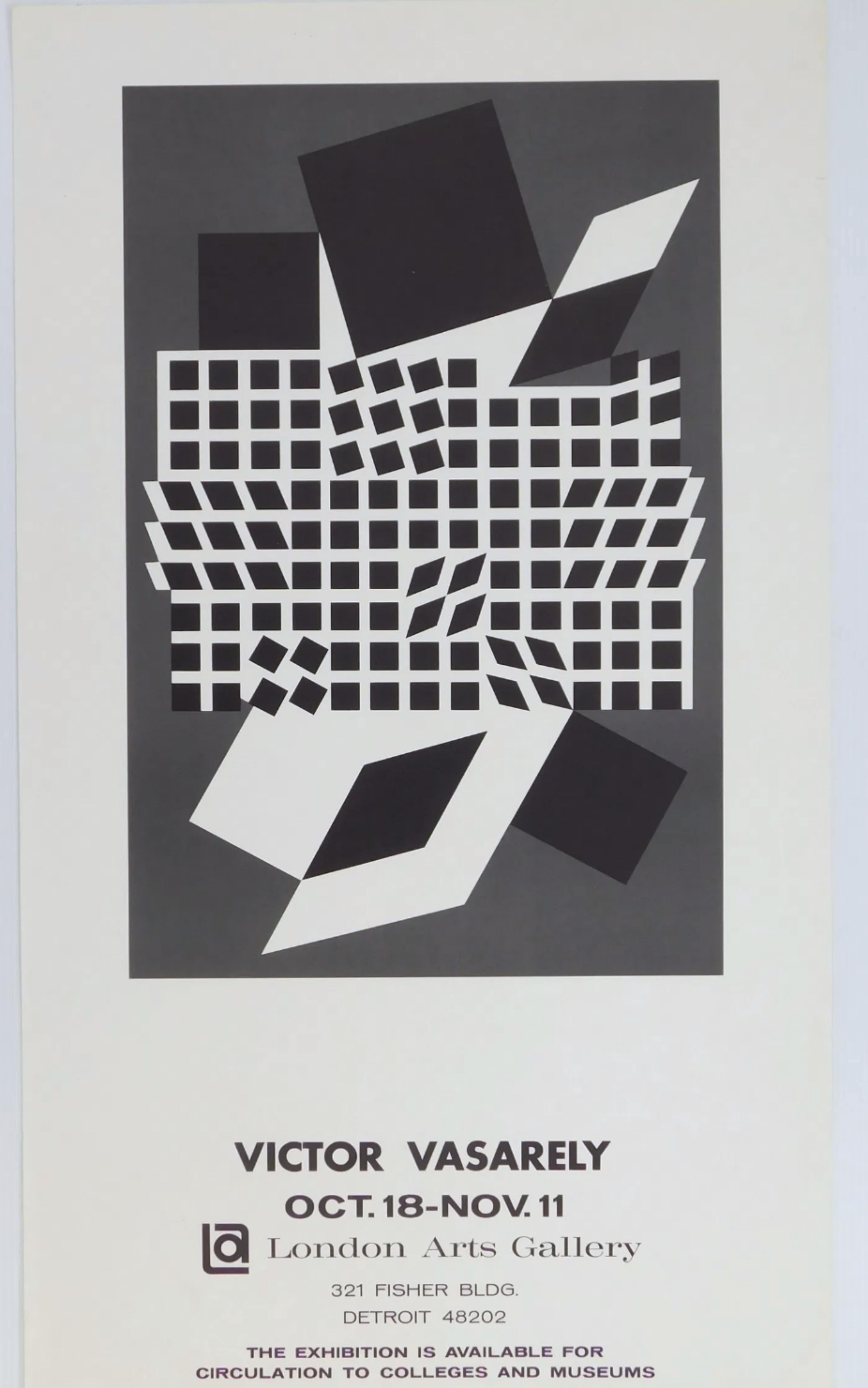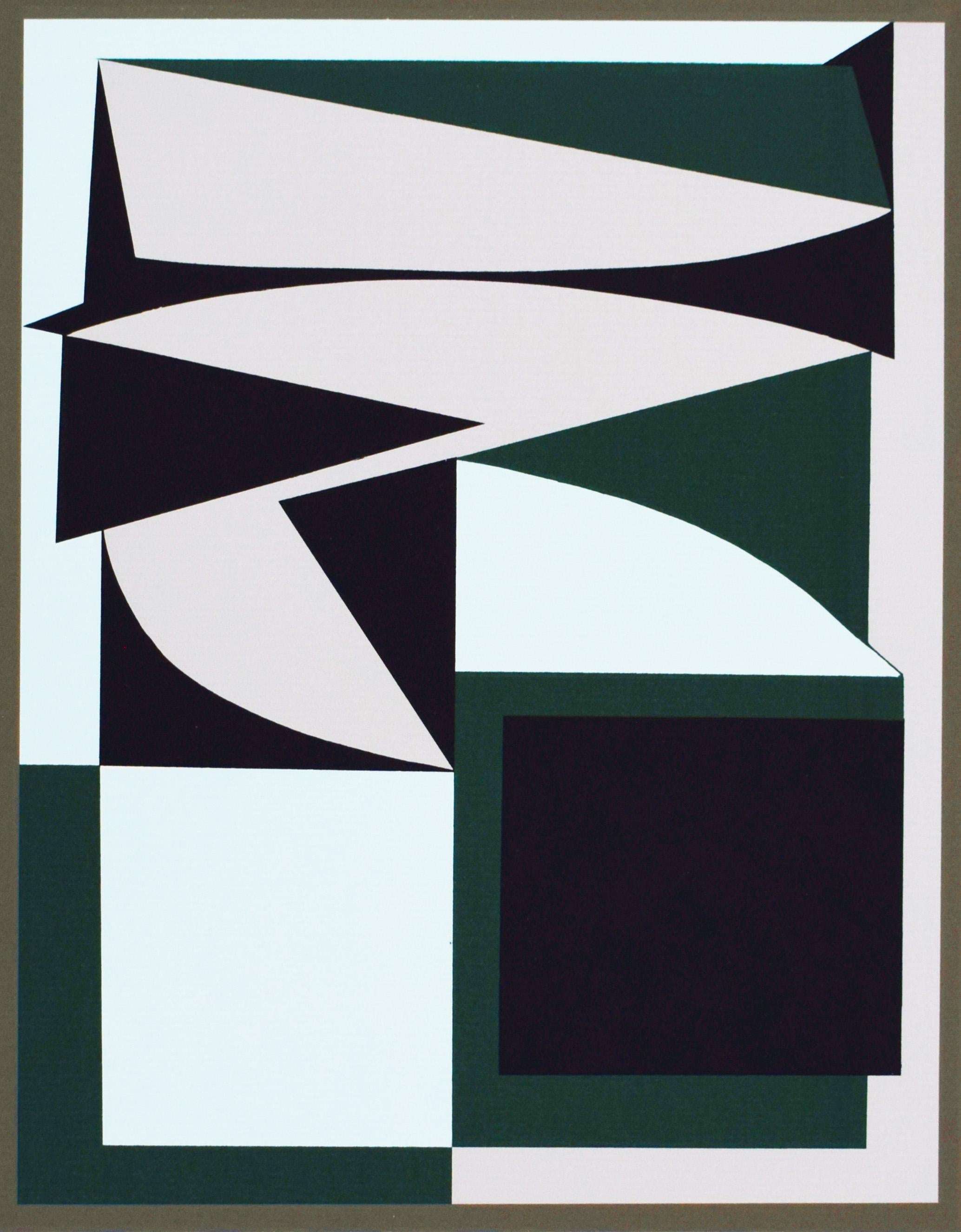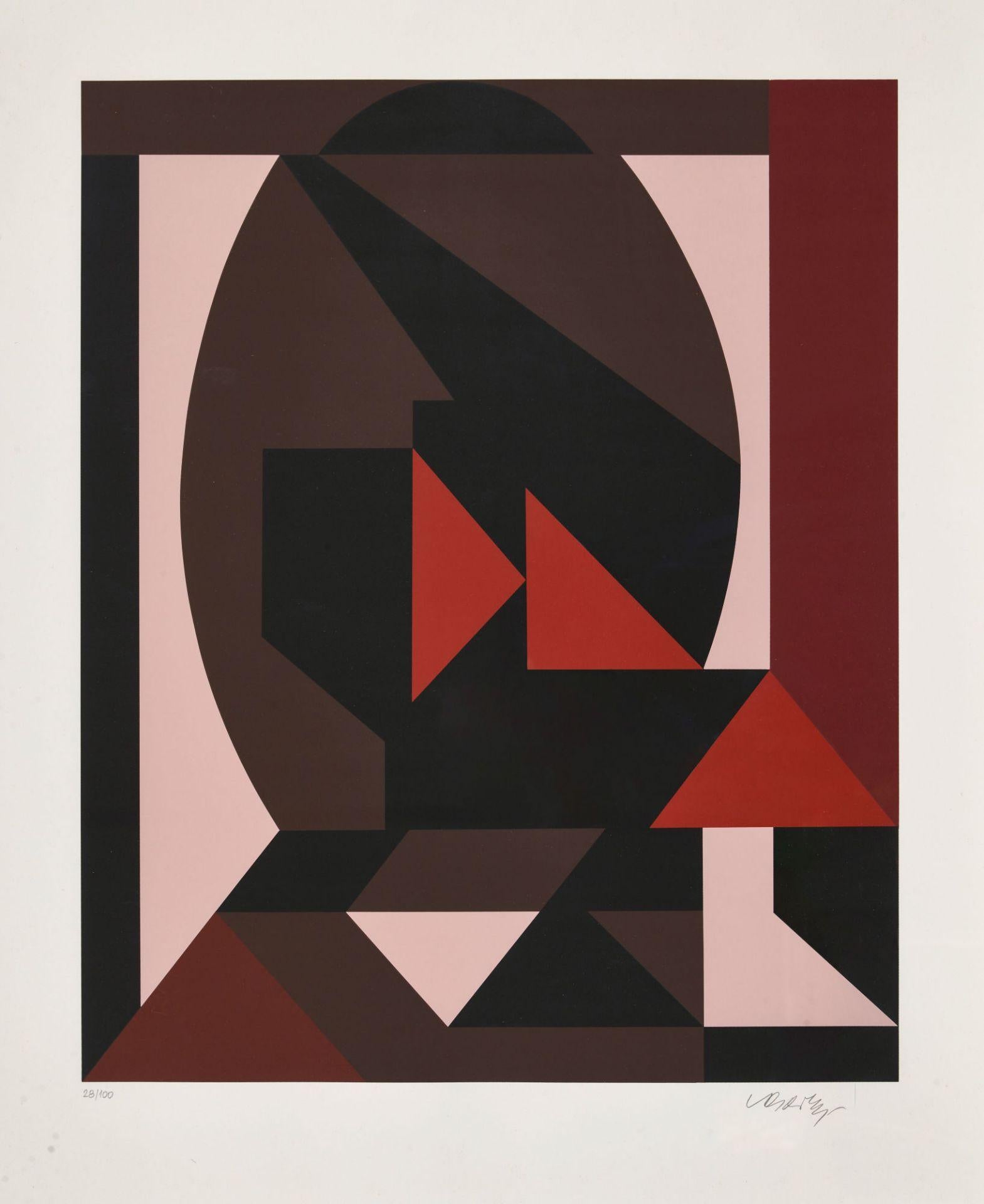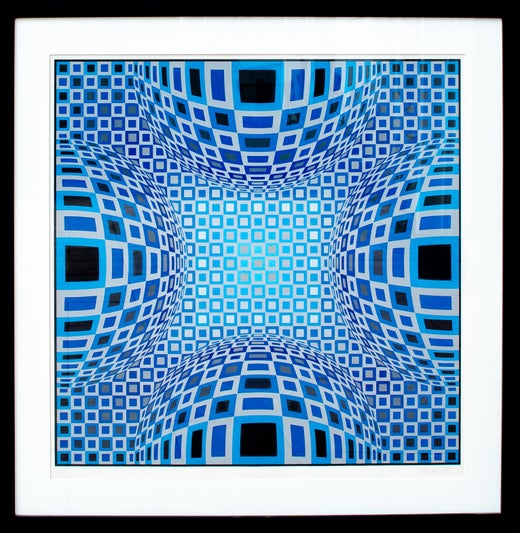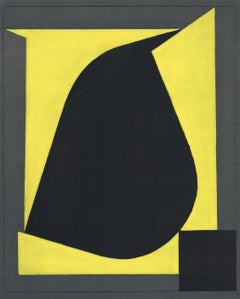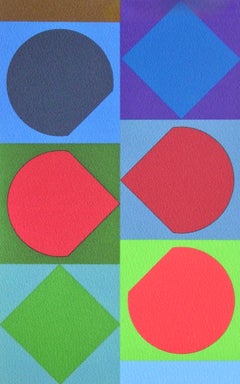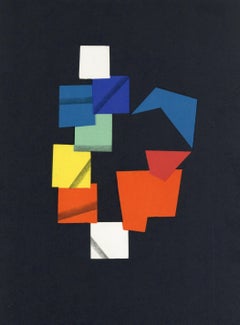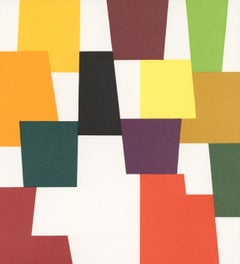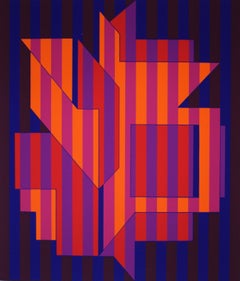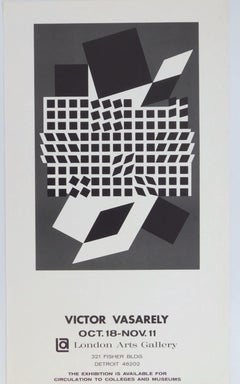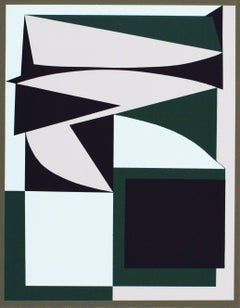This exquisite lithograph by Victor Vasarely (1906–1997), titled Projet de tapisserie (Tapestry Design), from the album XXe Siecle, Nouvelle serie N°4 (double) Janvier 1954, originates from the 1954 edition published by Societe Internationale dArt XXe Siecle, Paris, under the direction of Gualtieri di San Lazzaro, editeur, Paris, and printed by Mourlot Freres, Paris, 1954. A compelling early example of Vasarelys developing geometric abstraction, the composition reflects his transition toward the kinetic optical vocabulary that would later define Op Art.
Executed as a lithograph on velin paper, this work measures 12.5 x 9.75 inches. Unsigned and unnumbered as issued. Printed by Mourlot Freres, Paris, one of the foremost ateliers of the 20th century.
Artwork Details:
Artist: Victor Vasarely (1906–1997)
Title: Projet de tapisserie (Tapestry Design)
Medium: Lithograph on velin paper
Dimensions: 12.5 x 9.75 inches (31.75 x 24.77 cm)
Inscription: Unsigned and unnumbered as issued
Date: 1954
Publisher: Societe Internationale dArt XXe Siecle, Paris, under the direction of Gualtieri di San Lazzaro, editeur, Paris
Printer: Mourlot Freres, Paris
Condition: Well preserved, consistent with age and medium
Provenance: From the album XXe Siecle, Nouvelle serie N°4 (double) Janvier 1954, published by Societe Internationale dArt XXe Siecle, Paris; printed by Mourlot Freres, Paris, 1954
About the Publication:
Gualtieri di San Lazzaros XXe Siecle (Twentieth Century) was one of the most influential art journals of the modern era, founded in Paris in 1938 to unite the greatest painters, sculptors, and writers of the 20th century. San Lazzaro, a visionary editor and champion of modernism, believed in the synthesis of art and literature, creating a publication that served as both a scholarly platform and a collectors object. Across its many issues, XXe Siecle featured original lithographs, pochoirs, linocuts, and wood engravings by leading modern masters—including Picasso, Matisse, Chagall, Miro, Braque, Leger, Kandinsky, and Calder—printed by premier ateliers such as Mourlot, Atelier Jacomet, and Lacouriere. The double issue Nouvelle serie N°4 (Janvier 1954) stands as an important early postwar volume, embodying the journals mission to present the most innovative developments in modern art. Today, XXe Siecle remains an essential reference point in 20th century art history, prized by collectors, museums, and scholars worldwide.
About the Artist:
Victor Vasarely (1906–1997) was a Hungarian French painter, printmaker, and visionary whose groundbreaking explorations of geometry, color, and optical illusion established him as the father of Op Art and one of the most influential figures in 20th century modernism. Born in Pecs, Hungary, he began studying medicine before turning to art, enrolling at the Bauhaus inspired Muhely Academy in Budapest, where he absorbed the principles of constructivism, design, and the fusion of art with science. Moving to Paris in 1930, he immersed himself in the avant garde world of Pablo Picasso, Alexander Calder, Alberto Giacometti, Salvador Dali, Joan Miro, Wassily Kandinsky, Marcel Duchamp, and Man Ray, whose innovations in abstraction, surrealism, and spatial form deeply informed his own artistic evolution. Vasarelys early graphic works explored the interplay of structure and perception, leading him to develop a radical visual language of dynamic geometry and chromatic vibration that redefined the relationship between viewer and artwork. His iconic series—including Zebra, Vega, Gestalt, and Planetary Folklore—use precisely calibrated grids and shifting color patterns to create a sense of kinetic energy, illusion, and spatial depth, merging scientific rigor with visual poetry. Through this synthesis of art and mathematics, Vasarely founded the Op Art movement, influencing generations of artists such as Bridget Riley, Jesus Rafael Soto, Yaacov Agam, Carlos Cruz Diez, and Richard Anuszkiewicz, as well as countless architects and designers who incorporated his ideas into public art and modern design. A proponent of art for all, Vasarely sought to democratize beauty by integrating abstraction into daily life through architectural facades, tapestries, and monumental installations—culminating in the creation of the Fondation Vasarely in Aix en Provence in 1976, a center dedicated to the unity of art, science, and technology. His art, housed in major institutions including the Museum of Modern Art in New York, the Tate Modern in London, and the Centre Pompidou in Paris, remains celebrated for its precision, intellect, and timeless vibrancy. His highest auction record was achieved by Gestalt Vega (1969), which sold for 615,000 USD at Sothebys, New York, on May 17, 2019, confirming Victor Vasarelys enduring legacy as one of the most visionary and influential masters of optical and geometric abstraction in modern art.
Victor Vasarely, XXe Siecle 1954, Vasarely lithograph, Projet de tapisserie.
